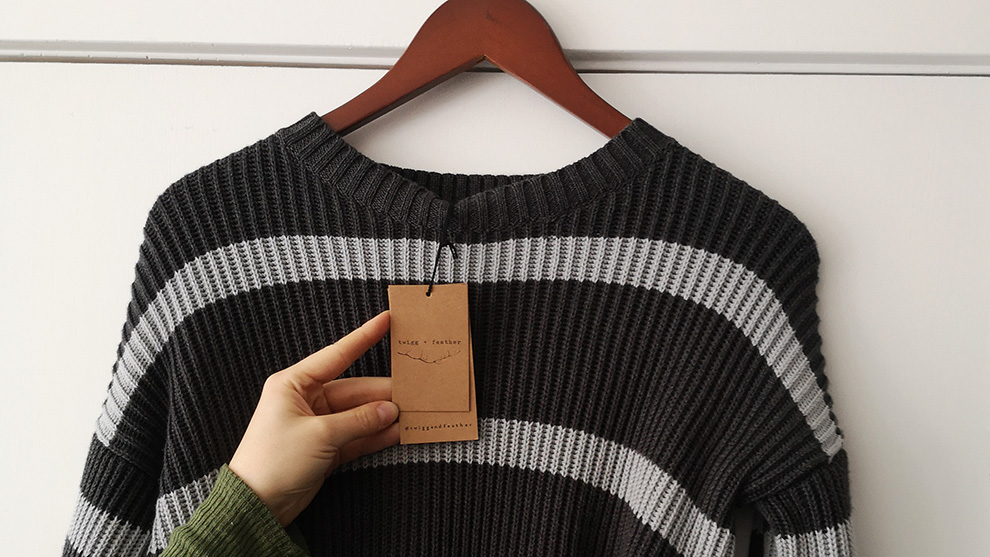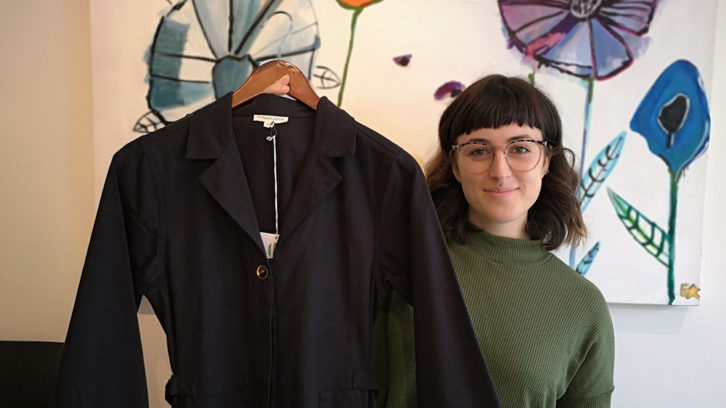Halifax professor developing sustainable textile industry in Nova Scotia
Flax grows easily in the province and it is far more sustainable than cotton

caption
A shirt made from local, sustainable material at Sattva Boutique.A Halifax professor is hoping to give Nova Scotians sustainable and local options for clothing by creating a thriving linen industry.
Jennifer Green, a professor of textiles at the Nova Scotia College of Art and Design (NSCAD), is working with an organic farm that grows flax, a plant that produces fibers which can be spun into linen. She’s worked with Taproot Farms in Port Williams, N.S. for 10 years.
“It can be hand-picked. No irrigation is required. It’s more labour intensive to produce, but in terms of the environmental footprint, it’s a lot safer,” Green said in an interview.
Green said she is conducting this research because the modern fashion industry is not sustainable. About 90 per cent of all clothing sold in the U.S alone is made from cotton or polyester. Green noted that cotton requires vast amounts of water and pesticides to grow, and polyester is made from oil.

caption
Jennifer Green is a professor of textiles at NSCAD.Fast fashion, which is the rapid production of inexpensive clothes to meet market trends, compounds the problem because having so much cheap clothing available to consumers has created high rates of discarded textiles. In Canada, the average person throws away 37 kilograms of textiles annually.
“Materials are being produced with a lot lesser longevity,” Green said. “You buy it for a season and you wear it for a season and then it rips or it’s not very high quality, so you end up having to donate it or throw it away.”
Apart from environmental sustainability, Green believes developing textiles from local plants brings people closer to their environment.
“We don’t have any connection to our fashion when we go and buy [clothes] at H&M or Zara,” said Green. “Even just a hundred years ago, fashion had a much more significant role in our lives.”
Green said buying local also increases consumers’ knowledge of the products they buy.
“There’s a general increase in knowledge and awareness of how our materials come to be, and I think, in that respect, it leads to a greater appreciation for the things that we buy,” said Green.
More work to be done
Green and Taproot are now working on producing something called line linen, which comes from extracting long fibers from flax plants. So far, they have been only making tow linen, which comes from shorter fibers and is coarser than line linen.
Green said more work needs to be done to get a local linen industry going.
“It’s still going to take some time and assessments to get there, but I think that it’s possible,” said Green.
Because material like cotton and polyester are unsustainable, retailers like Sattva Boutique in Halifax have chosen to sell clothes from local and sustainable sources.

caption
Nicole Eckert at Sattva holding locally-designed clothes.“You have to see the big picture when you’re shopping for clothes,” said Nicole Eckert, boutique coordinator at Sattva.
“It’s nice that people are in a place now where, if you’re aware, you’re either looking to buy used, you’re thrifting, and you’re fixing your clothes to make them last longer. And when you do need to shop new, you’re buying local.”
Sattva Boutique sells clothes by local designers. One jumpsuit, for example, was designed in Halifax and ethically made in India with organic pesticide-free cotton.
While these clothes are sustainable, they are not cheap. Eckert says the clothes at Sattva are cheaper than most designer clothes, but more expensive than clothing that would be considered fast fashion.
Eckert sees sustainable clothing as an investment.
“We like to educate our customers that when you’re coming in and shopping at Sattva you’re not just buying a piece of clothing, you’re also supporting a designer as a person,” said Eckert. “And you’re thinking about environment and sustainability.”
About the author
Nick Cantar
Nick Cantar is a journalist for The Signal. He is curious about all kinds of stories. When not working, Nick enjoys being outdoors.
